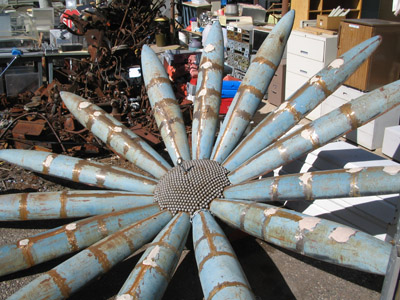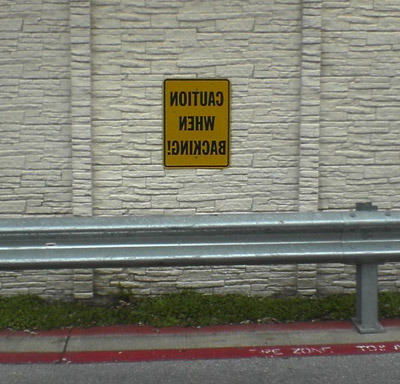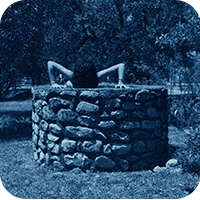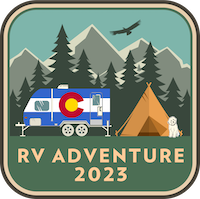Wrigleyvillage
When it comes to Wrigley Field lots of people talk about how great it is to see a ballgame smack in the middle of a vibrant neighborhood. Not as many talk about what this means for the neighbors. It is of course a boon to the merchants and businesses in very close proximity to the field, but the neighborhood also serves as the stadium’s parking lot (the only one, really) and as a mile-square urinal for the ocean of over-served fans who spill out at game’s end.
The Cubs have in recent years made a special effort to win the good will of the people who live in the community, specifically the area known as Lakeview. This includes spiffing up local parks, appearances of hall of fame players in the area, and free bike lock-up for games. But the coolest perk has to be Wrigleyville Neighbors Day. Each year the Cubs hold a lottery for residents in Lakeview to come to the park for 90 minutes of free food and drinks (alcohol too) and to play catch, picnic, or just lounge on the field. We’ve lost out the last two years but got it this year. One person per address plus guest. I took my son.
We were close to the front of the line of about 100 people so when we entered the field from the service door in the outfield it was like the park was ours alone. We ran out onto the grass with our mitts, one five-year-old boy and his five-year-old father. At first we just ran around because we could. We played catch. We ran the bases (four times) and just lounged in the outfield. It was extraordinary. A wonderful, memorable way to spend an afternoon. Thanks, Cubs. Well done.
Travelogue
Just a short note to let readers know that there’s a new site section ready in advance of my trip to Italy this summer. Actually it is just a dressed up category archive, but well-dressed I must say. The Return to Barile subsite will collect all my posts on the homecoming (and there are many already queued). It also includes some background on the whole thing, an interactive map, and links to photos and such. These extras of course are only available on the site. Sorry, feedreaders! Obviously it will fill up quite a bit more as the trip nears and proceeds.
Enjoy: Return to Barile.
29 bulbs
Today was the first day in months that my calendar had not a single colored box on it. Nothing. Zip. Not a single thing to do. A good thing, too, since I got home at 4:30 this morning after a day I wasn’t sure I would live through.
Start with a friend’s annual Kentucky Derby party early in the afternoon, add a Cubs home win (.500 baby!), season with Cinco de Mayo cheer and a frozen margarita machine, then cap off with a concert that started at 1 AM at the Metro. (Amon Tobin. Mixed live in 5.1 surround. Sick sick beats. My mouth was agape half the show.)
So needless to say I woke late, way late. Had lunch with my saintly wife and the three kids who she mercifully steered clear of me. (Mercy for them, I am sure. I was no role model.) Then, of course, nap time for all. So, essentially my day began at 3:30 PM today. And then I started to feel guilty about wasting a completely open day. You know, the guilt of a thousand to do’s paired with an empty calendar.
Why not enjoy the free day, you say? Well, I did an inventory of home tasks and here’s what the list read:
Rear screen door is permanently locked from a particularly hard wind-slam. We’ve removed the glass pane for exit, but my kids have biffed over the door frame so many times that it seems parentally negligent not to remove the whole thing from the threshold.
Grill on the deck is rotting from the inside-out. Not that we didn’t cook dinner on it tonight, but it is a serious fire hazard. Basically it is no longer a grill. It is a open gas line where one may prop foodstuffs upon several layers of carbonized former foods for cooking.
Car with expired temporary tags and plates that simply need to be affixed. You’d think I would have gotten to this after the latest ticket. Sigh.
But here’s the kicker. There are 29 burnt-out lights in this house. Yes, 29. Can bulbs, regular bulbs, vanity bulbs, chandelier bulbs, outdoor floods. This place is a like a medieval scriptorium.
How did it get to this point? Not entirely sure. I kinda exhausted myself inventorying all the burnt out bulbs so now I’m on the couch catching up on Lost episodes with thelovelywife. I guess it’ll all have to wait until the next empty calendar day.
UPDATE: Wife reports that the oven light is burnt out. That should be nice and dangerous to replace. Total: 30.
Calling him out
This is classic.
From ChicagoSports.com:
The Lilly-Piniella incident was one for the books. Lilly [the pitcher] had slipped on a bunt attempt for the second time when Piniella [the coach] gave him some unsolicited advice.
[Lilly recalls the walk to the mound.] “I suggested to him, almost like football, ‘You better change your spikes,’ ” Piniella said. “Then I went out there and he said, ‘Skip, your zipper is down.’ ”
A quick check by Piniella revealed Lilly was correct.
If you’re gonna get yanked from the game for sucking you might as well needle the man in charge, no?
And if you’re wondering where all the posts have gone of late, fear not. The Italy adventure is consuming much of my time … and soon will yours.
“Nice, but a little weird”
I’ve been in Los Alamos, New Mexico helping Steve Delahoyde from Coudal Partners on their latest short film project 72°. The original idea was to travel here to scope the Black Hole museum/junkyard/post-nuclear monument for vintage computing equipment. Scope we did, and find we did. The pieces we need are huge, dirty, and packed into a dark aisle crammed with decrepit gizmos. If we end up using them for the film we might have to do so on (or near) location. Would cost a fortune to transport.
We also decided to do a little side documentary on the town itself. The place is amazingly normal on the surface … a little too normal. Think Pleasantville or The Truman Show. It is a company town through and through, but one in which the ties that bind are not as simple as, say, in a Ford factory town. Secrecy and security are pervasive. Perched on a hill with virtually no crime, Los Alamos also boasts a higher IQ per capita than just about anything but the smallest university town.
Steve writes:
It’s a town that has seen hardly any population growth since the 1950s. It’s a place where nearly everyone who goes to school here leaves. It’s a place where few people are allowed to talk about what they do for a living. It’s a place that has the largest average income of any town in the country, yet the retail sector is a shambles and few businesses survive.
Naturally we had to find out more. We spent two days interviewing anyone we could get our hands on. Merchants, teachers, lab employees and retirees, museum docents and even the town peace “kook”. (He’s no kook.) You never quite know what you’re going to get when you walk up to someone and ask to mic and video them, but almost to a person the interviews surprised and enlightened us.
- The merchant who fields angry requests from townspeople not to sell a tourist t-shirt with a mushroom cloud on it.
- The Los Alamos native who returned (a rare act) to teach geology at the high school and who sees an upside to the devastating fire in 2001 that denuded nearby mountainsides: easier access to rocks.
- The retired physicist working at the hardware store who remembers a Japanese couple thanking him at the science museum for Los Alamos’ role in ending WWII.
- The irate lab employee who can’t believe the rest of the country doesn’t know (or care) about the fact that the laboratory is now a for-profit venture run by a consortium apart from the US government.
- The man who sees little difference between the fire that spread out of control after being deliberately set by forestry officials and the consequences of nuclear arms proliferation.
We’re looking forward to sharing these amazing stories with you, as Steve works to edit the many hours into a coherent piece. For now, here are two video snippets: postcard one and postcard two. As always you can follow the main film’s progress at the 72° blog.
See also: The discards of Los Alamos
Nano is the new micro
Long time readers of this blog (hello, you two) might remember the micropost. It was a little area for blurbs too small to be full posts. I discontinued it in June 2005 for the simple reason that it was too difficult. I had to edit the homepage Movable Type template each time.
But now comes Twitter, a service built around microposting or nanoblogging, as I like to call it. So, like the marginalia, music playlist, bookshelf, and photostream (all powered by sites elsewhere and excerpted here) the micropost now surfaces on the blog via Twitter. An experiment — as everything on this blog is, but one that I think might have staying power because of the administrative simplicity.
Feed readers: the micropost lives in the upper right of the blog home page. For now it a little bonus for coming to the actual webpage (until Feedburner supports Twitter, that is). You can subscribe to the microposts separately, though.
For nostalgists here are all the microposts prior to me canning them the first time.
Wired loves this little stuff.
Gadgetive
I’ve made some purchases recently. Let me tell you about them.
Got an AppleTV. All I ever wanted was an Airport Express (you know, the digital audio network bridge) with an HDMI out (for video). But Apple engineered it differently. In fact, the AppleTV is much more like a networked iPod video than a video-equipped Airport Express. It has a drive that you can synch media to or you can stream media from elsewhere. Strangely, if you want to put media on the AppleTV you must synch. Unlike iTunes and the iPod you can’t just drag media to the AppleTV to upload. This seems odd to me since it means anything you put on the AppleTV must also live in your iTunes library. That’s a lot of duplication for very large files. (Though it does show me the value of iTunes 7’s support for multiple libraries. Video can “live” in the iTunes library but reside on a different volume than all the music.)
Others have covered the AppleTV in much greater detail. I will add only these blurbs.
- No gigabit ethernet, which seems odd given gigabit on every other Mac and their focus on next-gen wireless.
- Wonderful, wonderful UI. Front Row meets Coverflow.
- It looks fine, not great, but fine on a standard def 4:3 TV. There was misinformation regarding whether this was possible at all.
- The music and photo handling — not reasons I purchased an AppleTV at all — is surprisingly good. Begs for party usage.
I really bought the thing so I could rip the DVD player out of the kids’ area. They’ve ruined dozens of discs from overhandling and are on their way to trashing a third DVD player. Now there’s no physical media to manhandle. And the AppleTV runs so damn hot the kids avoid it like a stovetop.
Finally broke down and bought a Novatel Merlin UX870 high-speed 3G wireless card. Cingular supports it — and supposedly will sell it — but I could not wait any longer. I have longed for wide-area wireless for years, but it was not until post-GPRS/EDGE speeds were fairly ubiquitous on Cingular that it became practical for me. The Novatel is a fantastic device. It is tiny (fitting in the ExpressCard slot) and I’ve gotten 3G speeds (UMTS/HSDPA) 90% of the time I have used it in Austin and New York. Last I tested it I was getting 800Kbps download. Not sure about the upstream, but I have been moving lots of big files around with no problems. I’m still resistant to Blackberry-style lashing to a wireless device, but this is going to make my life a lot easier. I’m tired of hunting out Starbucks and begging friends to use their T-Mobile accounts.
Over the holidays I went on a digital video tape transferring spree. All that usage finally jammed the tape door shut and pretty much has required taking the thing apart. So, in additional to not knowing if I put it back together correctly I’m just sick of physical media. (See above, kid-smarm on DVD’s.) I was totally smitten with my friend’s hard-disk video recorder, but it was way too pricey. Coincidentally my Canon G1 still camera has come to its end-of-life. So, two needs, not much money, and still gadget-happy. Enter the Canon Powershot TX1. It does not ship until June, but here’s why I was so impressed.
- High-def (720p), flash media-based video recording
- 7.1 megapixel still camera
- 10X optical zoom
Looking forward to that one.
And now I must return a call from my loan officer. Excuse me.
“When possible make a legal u-turn”
I’m a sucker for rental car GPS, even when I know pretty well where I am going. This was recently a problem.

Two nights ago I had to travel from JFK to White Plains, NY — a trip I’d never made previously. Easy, right? Well, not so easy when the Hertz Neverlost demands that you exit on the Hutchinson expressway when that exit is closed for repairs. So I exited as soon as I could and figured I’d just find somewhere else to get on the Hutch. As I drove around sidestreets, frontage roads, and massive mall parking lots — which are cartographic black holes to the GPS — the unit kept recalculating, recalculating. But each time it forced me right back to the closed exit.
OK, fine. Reset. Choose “Least Use of Freeways.” Recalculating, recalculating. Right back to the !@#$% closed exit. At this point it became comical because it dawned on me that I would have to deliberately get lost. Really lost. Really far away from the right path — all in order to force the GPS unit to calculate a path that bypassed the closed exit. And this I did. Getting lost in NYC is not particularly difficult, of course, but the sheer density of interconnected streets makes getting sufficiently, distantly lost a challenge. It worked and I travelled through some very quaint, eerily quiet towns on my way upstate. To add insult to inury the device actually started telling me to turn in the opposite direction from what the map (and logic) clearly demonstrated.
Of course, I had a printed map in the passenger seat the whole time. But I showed that GPS unit who was in charge, yessir.


















